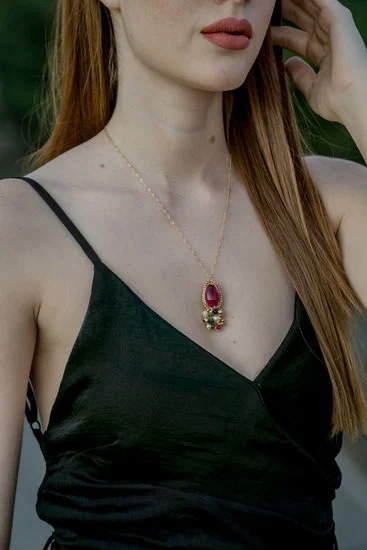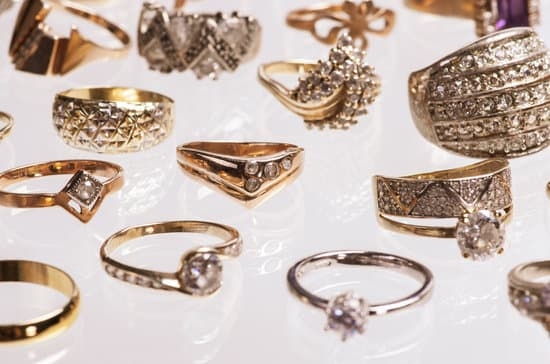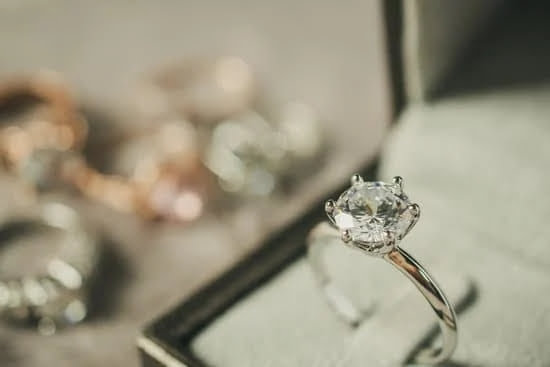The world of fashion jewelry design is a realm where beauty and artistry merge to create stunning pieces that allow individuals to express their unique style. Fashion jewelry has become increasingly popular, and more people are embracing the trend of designing and creating their own pieces.
Learning how to design fashion jewelry not only allows you to craft one-of-a-kind accessories but also gives you valuable skills that can lead to self-expression and even a potential business venture.
Fashion jewelry holds an irresistible allure, as it provides endless possibilities for self-expression through personal adornment. Whether it’s a delicate necklace, a sparkling bracelet, or a pair of glamorous earrings, these accessories have the power to elevate any outfit and reflect your personality. By designing fashion jewelry yourself, you have the freedom to customize each piece according to your preferences, making it truly unique and reflective of your style.
Moreover, designing fashion jewelry has become an emerging trend in recent years. People are yearning for meaningful connections with the items they wear, seeking alternatives to mass-produced accessories. Creating your own fashion jewelry allows you to infuse meaning into every piece you make – from selecting materials that resonate with you to incorporating symbols or charms that hold sentimental value. With every creation, you have the opportunity to tell a story through your designs.
Learning how to design fashion jewelry can unlock endless possibilities for creativity and self-expression. It not only enables you to create beautiful accessories but also imparts valuable skills that can be applied in various aspects of life.
Through this article, we will delve into the different elements of fashion jewelry design, explore the latest trends in the industry, discover sources of inspiration, learn essential tools and techniques, master the art of sketching and rendering, and even explore how starting a jewelry business can be a viable option. Get ready to embark on an exciting journey into the enchanting world of fashion jewelry design.
Understanding the Elements of Fashion Jewelry Design
Fashion jewelry design is an art form that combines creativity, craftsmanship, and a keen eye for aesthetics. To truly master the art of designing fashion jewelry, it is essential to understand the key elements that make a piece visually appealing and stylish.
This section will explore the different materials commonly used in fashion jewelry design, unveil the significance of colors, shapes, and textures in jewelry design, and provide tips for choosing the right elements to create a cohesive and stylish piece.
One of the first things to consider when designing fashion jewelry is the choice of materials. While precious metals and gemstones are often associated with high-end jewelry, fashion jewelry designers have the freedom to experiment with a wide range of materials. Common materials used in fashion jewelry include beads, crystals, acrylics, resin, wood, leather, and various types of metals such as gold-tone or silver-tone brass or stainless steel.
Colors play a crucial role in fashion jewelry design as they can evoke certain moods or convey specific messages. Different colors can also complement or contrast with each other to create visual interest. For example, warm colors like reds and oranges are often associated with energy and passion, while cool colors like blues and greens evoke a sense of calmness. The choice of color palette can greatly impact the overall look and feel of a fashion jewelry piece.
In addition to materials and colors, shapes and textures are important considerations in fashion jewelry design. The shape of a pendant or charm can drastically alter its visual impact. Geometric shapes like squares or circles convey a modern and minimalist aesthetic, whereas organic shapes like leaves or flowers provide a more natural and whimsical feel.
Textures also add depth and dimension to jewelry designs. For instance, smooth surfaces may lend elegance to a piece while rough textures bring out an edgier vibe.
By understanding how different materials interact with colors, shapes, and textures in jewelry design, you can effectively choose elements that complement one another and create a cohesive and stylish piece. Whether you prefer minimalistic designs or bold statement pieces, having a strong grasp of these elements will enhance your ability to design fashion jewelry that is visually captivating and fashionable.
| Element | Examples |
|---|---|
| Materials | Beads, crystals, acrylics, resin, wood, leather, metals |
| Colors | Reds, oranges (warm colors); blues, greens(cool colors) |
| Shapes | Squares, circles (geometric shapes); leaves, flowers (organic shapes) |
| Textures | Smooth surfaces (elegance), rough textures (edgy vibe) |
Delving into the Latest Fashion Jewelry Trends
Fashion jewelry trends are constantly evolving, reflecting the changing tastes and preferences of consumers. In this section, we will delve into the latest fashion jewelry trends, from minimalist to statement pieces, and examine the influence of celebrities and fashion influencers in jewelry design. We will also identify the key elements that make a jewelry design trendy and fashionable.
LATEST TRENDS IN FASHION JEWELRY
The world of fashion jewelry is diverse, with trends emerging and evolving at a rapid pace. Currently, minimalist jewelry is gaining popularity due to its understated elegance and versatility. Simple geometric shapes, delicate chains, and dainty charms are popular choices for those seeking a more subtle and refined look.
On the other end of the spectrum, statement jewelry continues to make waves in the fashion industry. Bold and eye-catching designs featuring oversized gemstones, intricate metalwork, and unique motifs offer a way to express creativity and individuality. These bold pieces can transform an outfit from ordinary to extraordinary.
INFLUENCE OF CELEBRITIES AND FASHION INFLUENCERS
Celebrities have long been influential in shaping fashion trends, including in the realm of jewelry design. Red carpet events and high-profile appearances often feature stunning jewelry pieces that capture public attention and inspire others. Fashion influencers on social media platforms also play a significant role in showcasing new styles and influencing consumer preferences.
When it comes to celebrity-inspired or influencer-inspired jewelry, certain designs or motifs may become particularly sought after. For example, if a popular actress is seen wearing a particular type of gemstone necklace or hoop earrings, sales for similar styles may skyrocket as fans strive to emulate their favorite stars’ looks.
KEY ELEMENTS OF TRENDY JEWELRY DESIGN
There are several key elements that contribute to making a piece of jewelry trendy and fashionable. Materials such as gold, silver, and precious gemstones continue to be highly sought after. However, unconventional materials such as acrylic, resin, and even recycled materials are becoming more prevalent, offering a unique aesthetic.
Shape and form also play a crucial role in trendy jewelry design. Geometric shapes remain popular, but organic and asymmetrical designs are gaining traction as well. Playing with textures adds visual interest and depth to a piece, whether through hammered metal or intricate beadwork.
Gathering Inspiration
Gathering inspiration is an important step in the fashion jewelry design process. It allows designers to bring their unique vision to life and create pieces that are truly one-of-a-kind. In this section, we will explore different sources of inspiration and provide tips on how to develop a personal style and design aesthetic for your jewelry.
Exploring Different Sources of Inspiration
When it comes to finding inspiration for your fashion jewelry designs, the possibilities are endless. One common source of inspiration is nature. The beauty and diversity found in flora and fauna can provide endless ideas for creating intricate patterns, organic shapes, and vibrant color combinations.
Art is another rich source of inspiration for jewelry designers. From classical paintings to contemporary sculptures, art offers a wealth of ideas when it comes to colors, textures, and overall design concepts. Cultural influences can also provide a unique perspective in jewelry design. Exploring different cultures’ history, traditions, and symbols can help you infuse meaning into your designs while paying homage to diverse communities.
Tips for Developing a Personal Style
Developing a personal style as a jewelry designer is essential for creating cohesive collections that reflect your unique vision. Start by examining the kind of jewelry you personally gravitate towards and take note of any recurring themes or elements. This self-reflection will help you define your signature style and allow you to create cohesive collections that speak to your target audience.
Experimentation is key when developing a personal style. Don’t be afraid to step outside your comfort zone and try new techniques or materials. Pushing yourself creatively will aid in the evolution of your design aesthetic.
Utilizing Mood Boards and Sketching
Mood boards are an invaluable tool for visualizing ideas and refining designs during the creative process. Collect images, fabric swatches, color samples, or anything else that inspires you visually and create a physical or digital mood board. This will help you establish a cohesive color palette, identify key design elements, and maintain consistency throughout your collection.
Sketching is another important technique for bringing your ideas to life. Whether you are a skilled artist or just starting out, sketching allows you to explore different design possibilities and create a blueprint for your final piece. Don’t worry about making perfect sketches; the purpose is to capture the essence of your design concept.
Tools and Techniques for Fashion Jewelry Design
Designing fashion jewelry requires a combination of creativity and technical skills. Having the right tools and knowing the appropriate techniques is essential for bringing your design ideas to life. In this section, we will explore the tools and techniques that are commonly used in fashion jewelry design.
Tools for Fashion Jewelry Design
To get started with fashion jewelry design, you will need some basic tools. Here are some essential tools that every jewelry designer should have:
– Pliers: Pliers are one of the most important tools for jewelry making. They come in various types, such as round-nose pliers, chain-nose pliers, and flat-nose pliers, each serving a different purpose.
– Wire Cutters: Wire cutters are necessary for cutting wires and chains to the desired length.
– Bead Mats: Bead mats provide a non-slip surface to work on and prevent beads from rolling away.
– Jewelry Saw: A jeweler’s saw is used for cutting metal pieces or creating intricate designs.
– Jewelry Files: Files are used for smoothing rough edges and shaping metal components.
– Jewelry Hammer: A small hammer is useful for flattening wire or giving texture to metal pieces.
Techniques for Fashion Jewelry Design
Once you have the right tools, it’s important to understand and practice various techniques used in fashion jewelry design. Here are a few fundamental techniques:
– Wire Wrapping: Wire wrapping involves bending and twisting wire to create loops, links, wraps, or frames around beads or gemstones.
– Bead Stringing: This technique involves threading beads onto a stringing material such as wire or thread to create necklaces, bracelets, or earrings.
– Bezel Setting: Bezel setting is a technique used to hold gemstones securely in place by creating a metal collar or rim around them.
– Metal Stamping: Metal stamping is the process of impressing designs or letters onto metal surfaces using a hammer and metal stamps.
Exploring Advanced Techniques
For those looking to take their fashion jewelry design skills to the next level, there are more advanced techniques to explore:
– Metalworking: Metalworking involves shaping, soldering, and manipulating metals to create custom components for your jewelry designs.
– Gemstone Setting: Gemstone setting requires precision and specialized tools to securely mount gemstones into jewelry pieces.
– Enameling: Enameling is the art of applying powdered glass onto metal surfaces and then heating it to create vibrant colors and patterns.
Understanding these tools and techniques will provide you with a strong foundation in fashion jewelry design. Practice is key, so don’t be afraid to experiment and try new things. With time and dedication, you can develop your own unique style and create stunning pieces of fashion jewelry.
Designing with Purpose
Designing fashion jewelry goes beyond creating beautiful pieces; it also involves infusing them with meaning and purpose. Many people seek out custom-made jewelry to commemorate special occasions or milestones in their lives, making personalized pieces incredibly meaningful and sentimental. When designing fashion jewelry with a purpose, there are a few guidelines to consider.
Firstly, it’s important to understand the significance of the occasion or milestone that the jewelry is meant to represent. Whether it’s an anniversary, graduation, or a celebration of self-expression, take the time to listen to the story behind why someone wants a custom piece created. This allows you to tailor your designs specifically for that individual or moment.
Next, focus on creating personalized pieces that reflect the wearer’s personality and style. Consider their favorite colors, symbols, or motifs that hold special meaning to them. Incorporating these elements into the design helps establish a unique connection between the wearer and the piece of jewelry.
In addition to personalization, designing with purpose can also involve creating pieces for specific causes or charities. Many jewelry designers use their talent and skills to raise awareness and support for various social issues. By partnering with organizations or designing limited-edition collections, you can make a positive impact through your designs.
By embracing customization and infusing meaning into your fashion jewelry designs, you not only create unique pieces but also provide individuals with cherished keepsakes that last a lifetime. The process of designing with purpose allows you to connect deeply with your clients while imparting sentimental value into each piece of jewelry you create.
Guidelines for Creating Custom and Meaningful Fashion Jewelry
- Understand the significance of the occasion or milestone behind the custom piece.
- Tailor your design specifically for that individual or moment.
- Reflect the wearer’s personality and style in the design.
- Incorporate favorite colors, symbols, or motifs that hold special meaning.
- Consider creating pieces for specific causes or charities to make a positive impact.
Mastering the Art of Jewelry Sketching and Rendering
Jewelry sketching and rendering is an essential skill for fashion jewelry designers, as it allows them to bring their ideas to life on paper before creating the actual piece. By mastering the art of jewelry sketching and rendering, designers can accurately represent proportions, details, and dimensions of their designs, ensuring that the final product matches their vision.
To begin the process of jewelry sketching and rendering, it is important to have a basic understanding of drawing techniques. This includes knowing how to accurately depict shapes, lines, shading, and perspective. Learning these fundamental drawing skills will provide a solid foundation for creating detailed and realistic jewelry sketches.
After acquiring basic drawing skills, designers can start applying those techniques specifically to jewelry design. One important aspect of jewelry sketching is accurately representing different materials such as metals, gemstones, and beads. Understanding how light interacts with these materials and incorporating shine and reflections into your sketches will make them more realistic and visually appealing.
In addition to traditional hand-drawn sketches, many designers now use digital tools to create realistic jewelry renderings. Software programs like Adobe Illustrator or Rhino allow for precise detailing and easy editing. These digital renderings are not only useful for conceptualizing designs but can also be incorporated into professional portfolios or used for marketing purposes.
Mastering the art of jewelry sketching and rendering takes practice, but with time and dedication, designers can develop their own unique style and technique. Whether using traditional mediums or digital tools, jewelry sketches play a crucial role in communicating design ideas clearly to clients or manufacturers.
Taking Fashion Jewelry Design to the Next Level
Starting a jewelry business can be an exciting and rewarding endeavor for those passionate about fashion jewelry design. With the right steps and strategies, you can turn your love for creating custom pieces into a profitable business venture.
To begin, it is essential to establish a clear vision and branding for your jewelry business. This includes defining your target market, identifying your unique selling proposition, and creating a strong brand identity that resonates with your customers. By understanding who your ideal customers are and what sets your jewelry apart from others in the market, you can effectively position yourself in the industry.
Marketing plays a crucial role in building awareness and attracting customers to your jewelry business. Utilize various marketing channels such as social media platforms, online marketplaces, and physical retail locations to showcase your designs. Engage with potential customers by sharing behind-the-scenes glimpses of your design process, offering valuable content related to fashion jewelry trends or care tips, and interacting with followers through comments and messages.
In addition to marketing efforts, it is important to establish an online presence for your jewelry business. A well-designed website that showcases your portfolio and allows customers to easily browse through and purchase your designs is essential. Consider incorporating e-commerce functionality into your website or partnering with reputable online marketplaces to reach a broader audience.
Running a successful jewelry business also requires effective inventory management, pricing strategies, and quality control measures. Keep track of inventory levels to ensure you have enough stock on hand without overstocking or understocking. Set competitive prices that consider factors such as materials used, labor costs, market demand, and perceived value. Finally, maintain stringent quality control measures to ensure that each piece meets the highest standards of craftsmanship.
By following these steps and continually honing both your design skills and entrepreneurial acumen, you can take fashion jewelry design to the next level by starting a successful jewelry business. Remember that perseverance is crucial in this highly competitive industry – continue learning about emerging trends, refining your designs, and staying connected with the jewelry community to stay ahead of the curve.
With passion, dedication, and a strategic approach, you can turn your love for fashion jewelry design into a thriving business venture.
Frequently Asked Questions
How to create a jewellery design?
Creating a jewelry design involves a combination of creativity, technical skills, and understanding the preferences of the target audience. To start, gather inspiration from various sources such as nature, art, or cultural symbols. Sketching initial ideas helps to visualize the design and make any necessary modifications.
Once satisfied with the concept, creating a 3D prototype or using computer-aided design (CAD) software can bring the design to life. A jewelry designer should also consider factors such as choosing the right materials, selecting gemstones if applicable, and ensuring that the design is both aesthetically pleasing and practical to manufacture.
How do you become a jewellery designer?
Becoming a jewelry designer typically requires a combination of education, creativity, and industry experience. While formal education is not always mandatory, enrolling in specialized programs or obtaining a degree in jewelry design can provide valuable knowledge about materials, techniques, and design principles. Additionally, attending workshops or apprenticeships under established designers can offer hands-on experience and networking opportunities within the industry.
Developing an individual style by continuously honing your creativity is crucial for success as a jewelry designer. It’s also helpful to stay up to date with industry trends while pushing boundaries to create unique designs that will appeal to customers.
How to have custom jewelry made?
Having custom jewelry made involves collaborating closely with a skilled jeweler or jewelry designer who specializes in customization. Begin by finding reputable jewelers who offer custom services through recommendations or online research. Schedule a consultation to discuss your ideas and preferences in detail; this could include selecting specific materials like gold or silver, choosing gemstones or diamonds if desired, and considering any specific design elements you’d like incorporated into the piece.
The jeweler will work closely with you throughout the process, providing sketches or digital renderings of proposed designs for your approval before proceeding with production. The timeframe may vary depending on complexity and materials involved but working closely with an experienced jeweler ensures you’ll receive a personalized piece tailored specifically to your preferences.

Welcome to my jewelry blog! My name is Sarah and I am the owner of this blog.
I love making jewelry and sharing my creations with others.
So whether you’re someone who loves wearing jewelry yourself or simply enjoys learning about it, be sure to check out my blog for insightful posts on everything related to this exciting topic!





